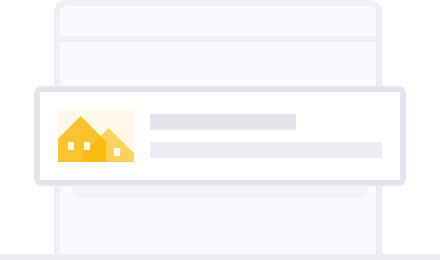Market Trends
- Average Sold Price
- Median Sold Price
- Highest Sold Price
- Lowest Sold Price
Market Trends are calculated using MLS® sold listing data

- Any
- $ 100,000
- $ 150,000
- $ 200,000
- $ 400,000
- $ 800,000
- Any
- $ 100,000
- $ 150,000
- $ 200,000
- $ 400,000
- $ 800,000
- Any
- 1
- 2
- 3
- 4
- 5
- Any
- 1
- 2
- 3
- 4
- 5
- Any
- 1
- 2
- 3
- 4
- 5
- Any
- 1
- 2
- 3
- 4
- 5
MARKET SNAPSHOT
- ?Sold Listings
- ?Average Sales Price
- ?Average Days on Market





CONTACT
REAL ESTATE NEWS

The BRRRR Method Explained: How to Build a Real Estate Empire in 2025
The BRRRR Method Explained: How to Build a Real Estate Empire in 2025
Real estate investing might sound intimidating, but there’s a strategy that’s making waves for its ability to turn small beginnings into a growing portfolio of income-generating properties. It’s called the BRRRR Method, which stands for Buy, Rehab, Rent, Refinance, Repeat. This method is simple enough for beginners yet powerful enough to help experienced investors build wealth. Whether you’re a homeowner looking to make the most of your property, a buyer ready to start investing, or a seller curious about how investors think, this guide will explain the how, what, why, and when of the BRRRR method. What is the BRRRR Method? At its core, the BRRRR method is about transforming distressed properties into profitable assets. Unlike traditional house-flipping (where you sell after renovations), BRRRR focuses on creating long-term wealth by holding onto the property and generating rental income. Here’s what each step entails: Buy: Find an undervalued or distressed property with potential for equity growth after repairs. Rehab: Renovate the property strategically to boost its value and make it attractive to renters. Rent: Secure tenants who will cover your mortgage and generate cash flow. Refinance: Use the increased property value to refinance and pull out your initial investment. Repeat: Reinvest that capital into your next property and grow your portfolio. This cycle allows investors to scale their real estate holdings without needing significant upfront capital for every new purchase. How Does It Work? Imagine you’re starting with a modest budget but big ambitions. Here’s a simplified example: You purchase a distressed property for $150,000. You spend $30,000 on renovations, bringing your total investment to $180,000. After renovations, the property’s value (known as After Repair Value or ARV) increases to $250,000. You rent it out for $2,500 per month (using the 1% rule: rent should equal at least 1% of the ARV). You refinance based on the new ARV and pull out $200,000 through a cash-out refinance—recovering your initial investment while keeping an income-producing asset. With this method, you now have funds to repeat the process with another property while still earning rental income from the first one. Why Choose the BRRRR Method? The BRRRR strategy is popular among real estate investors for several compelling reasons: Scalability: By reinvesting capital from one project into another, you can grow your portfolio exponentially. Passive Income: Rental properties provide ongoing cash flow while building equity over time. Equity Growth: Renovations increase property value, allowing you to leverage that equity for future investments. Tax Benefits: Cash-out refinances are typically tax-free since they’re considered loans rather than income. However, it’s not without challenges. The method requires careful planning, knowledge of local markets, and access to financing. Additionally, unexpected repair costs or difficulty finding tenants can impact profitability. When Should You Use This Strategy? The BRRRR method is ideal in several scenarios: Market Conditions: When home prices are reasonable but demand for rentals is strong. Personal Goals: If you aim to build long-term wealth rather than seeking quick profits from flipping. Experience Level: While beginners can succeed with proper guidance, this method is best suited for those willing to learn about market analysis, renovation budgeting, and tenant management. Timing is key. For 2025, keep an eye on economic trends like interest rates and housing demand in your target area. A cooling housing market might offer more opportunities to buy undervalued properties. A Quick Success Story Take Alana and Mike, who started with no prior real estate experience. They bought a distressed property for $80k using a hard money loan and spent $55k on renovations. After just six months, they refinanced at a new value of $250k—pocketing $20k in tax-free cash while retaining ownership of an Airbnb rental generating over $3,400 per month in income. They’ve since scaled their portfolio using this same strategy. Their story highlights how attention to detail and leveraging financing tools can turn even small beginnings into substantial wealth. How Can You Get Started? Here are some actionable steps if you’re considering the BRRRR method: Educate Yourself: Learn about local markets and calculate potential ARVs before purchasing any property. Build Your Team: Assemble a reliable network of contractors, lenders, and property managers. Crunch the Numbers: Use tools like ROI calculators or consult professionals to ensure profitability at every stage. Start Small: Begin with one property to master the process before scaling up. Ask an expert Realtor who has knowledge and experience in the BRRR method. Final Thoughts The BRRRR method isn’t just an investment strategy—it’s a blueprint for building generational wealth through real estate. By following its principles and staying disciplined in execution, you can create a self-sustaining system that grows your portfolio year after year. If you’re interested in this approach and want personalized advice tailored to your goals, reach out to our team at Luxe Omni eXp Realty. We’re here to guide you every step of the way as you embark on your journey toward financial freedom through real estate investing!
MORE
How to Create a Calm and Organized Home in the Post-Holiday Chaos
How to Create a Calm and Organized Home in the Post-Holiday Chaos
As the last gift wrap is tossed, the holiday decorations packed away, and the excitement of the season begins to settle, January often greets us with a home that feels anything but serene. The festive chaos leaves behind a trail of clutter, misplaced items, and perhaps a little post-holiday fatigue. However, there’s a silver lining: January offers the perfect opportunity to reset your living space and create a home that feels calm, organized, and ready for the year ahead. The Aftermath of the Holidays The weeks following the holidays are often filled with mismatched storage bins, forgotten gifts, and the haunting reminder of New Year’s resolutions to “get organized.” This transitional period between the high-energy holiday season and the regular daily grind can feel overwhelming. But rather than rushing to tidy mindlessly, think of this as a chance to approach your home with intention and purpose. Start with a deep breath and a little perspective. Your home doesn’t need to be “perfect”—it just needs to function well for you and offer a sense of peace. Ready? Let’s begin your journey toward a clutter-free, calmer home. Step 1: Clear the Holiday Clutter One of the biggest culprits of post-holiday disorganization is lingering holiday décor. While it’s tempting to push everything into storage haphazardly, taking the time to pack thoughtfully can save you stress next December. Sort and Declutter Decorations: Begin by deciding what items you truly love and want to use again. If there’s something you didn’t display this year, chances are you won’t miss it next year. Donate or recycle items that no longer spark joy. Label Storage Bins: Use clear bins or detailed labels to make next year’s décor retrieval seamless. Include categories like “indoor lights” or “tree ornaments” for easy organization. Safeguard Fragile Items: Wrap fragile ornaments in tissue paper or bubble wrap, ensuring they’re stored securely. By thoughtfully packing away your holiday items, you’ll reduce clutter and free up space, creating a cleaner slate for everything else. Step 2: Organize Gift Overflow New gifts often come with the challenge of finding them a proper place in your home. This is a great time to adopt the “one in, one out” method. For every new item, find an old item you no longer use to donate, sell, or recycle. Create Designated Storage Areas: Whether it’s new clothing, kitchen gadgets, or toys, allocate clear spaces for new items where they’ll be easily accessible yet out of the way. Rotate Outgrown or Unused Items: Especially with children, sort through old toys or clothes. You’ll make room for the new while decluttering in the process. Set Boundaries: If you’ve received decorative items like throw pillows or candles, decide if they truly work for your space. Less is often more when aiming for calm. Step 3: Simplify Key Spaces Once the holiday chaos is cleared, shift your focus to the areas of your home that impact daily life the most. These spaces—kitchens, living rooms, and entryways—are often the busiest and can benefit from simplification. Declutter Countertops: Clear surfaces encourage a sense of calm and provide functional space for daily tasks. Store only essential items on countertops. Contain Small Items: Use baskets or drawer organizers to keep small, everyday items (like keys, bills, or chargers) out of sight but still easy to find. Reconfigure Furniture Layouts: After entertaining during the holidays, it may be time to reset your living room for your family’s daily activities. Experiment with layouts that feel less cramped and more functional. A good rule of thumb is to eliminate items that feel like “visual noise” to make your home look and feel more streamlined. Step 4: Reset Your Cleaning Routine With the holidays behind you, it’s time to bring back a cleaning schedule that works for your lifestyle. Start small, focusing on one area at a time. Deep Clean High-Traffic Areas: Target spaces like the kitchen, bathrooms, and living room, where holiday activities may have created messes. Adopt Daily Habits: Simple routines like doing dishes immediately after meals or tidying up before bed can help maintain order. Introduce Refreshing Scents: Add candles, essential oils, or air fresheners with calming scents like lavender or eucalyptus to evoke tranquility. Step 5: Make Space for Calm Creating a calm home isn’t just about decluttering—it’s about intentionally designing spaces that promote relaxation and wellness. Introduce Cozy Touches: Soft blankets, warm lighting, and plush rugs can make your home feel like a sanctuary during winter. Designate Quiet Zones: Whether it’s a reading nook, yoga space, or cozy chair by the window, designate calming areas where you can unwind daily. Add Greenery: Houseplants not only clean the air but also add life and a sense of serenity to your home. Step 6: Plan Ahead for the Year Finally, use this time of reset to think about your home goals for 2025. Whether it’s tackling a larger renovation or adopting minimalist living, having a vision for your home can keep you motivated and on track throughout the year. Ready to Transform Your Home? There’s no need to face the post-holiday clutter alone. Whether you need advice on creating a more functional layout, organizing your home, or preparing for a fresh start, we’re here to help. Reach out to the Luxe Omni team today and let us guide you toward a calm, organized, and beautiful living space. Your path to peace and practicality begins here!
MORE
How Refinancing Your Home Can Unlock Profitable Real Estate Investment Opportunities
How Refinancing Your Home Can Unlock Profitable Real Estate Investment Opportunities
Refinancing your home can be a powerful financial strategy for homeowners looking to grow their wealth through real estate investments. By leveraging the equity in your property, you can unlock funds to purchase additional properties, improve cash flow, or diversify your investment portfolio. This blog will explore the key benefits of refinancing and how it can pave the way for successful real estate investing. Understanding Refinancing: What Does It Mean? Refinancing involves replacing your current mortgage with a new one, often with better terms or interest rates. For homeowners, this process offers an opportunity to access the equity built in their property—essentially the difference between the home's market value and the remaining mortgage balance. This equity can be converted into cash through a "cash-out refinance," which is commonly used to fund real estate investments. Why Refinance? Key Benefits for Real Estate Investors Refinancing your home offers several advantages that can directly support your investment goals: Access to Capital for New Investments One of the most compelling reasons to refinance is to unlock your home's equity. A cash-out refinance allows you to tap into this capital and use it as a down payment on an investment property. This approach enables you to expand your real estate portfolio without needing significant upfront savings. Lower Interest Rates and Monthly Payments If market conditions have improved since you took out your original mortgage, refinancing can help you secure a lower interest rate. This not only reduces your monthly payments but also frees up additional cash flow that can be redirected toward other investments or property management expenses. Shorten Loan Terms and Save on Interest By refinancing to a shorter loan term (e.g., switching from a 30-year to a 15-year mortgage), you can save thousands of dollars in interest over time. While this increases monthly payments, it accelerates equity growth, giving you quicker access to funds for future investments. Diversify Your Portfolio Refinancing provides the financial flexibility needed to diversify into different types of real estate, such as rental properties, vacation homes, or commercial spaces. Diversification reduces risk and increases long-term stability in your investment portfolio. Tax Benefits Interest paid on a refinanced mortgage used for investment purposes may be tax-deductible. Consult with a tax professional to understand how refinancing could benefit your specific situation. Is Refinancing Right for You? Key Considerations While refinancing offers numerous benefits, it’s important to evaluate whether it aligns with your financial goals and circumstances: Equity Requirements: Most lenders require at least 20% equity in your home for a cash-out refinance. Credit Score: A strong credit score (typically 680 or higher) is essential for securing favorable terms. Debt-to-Income Ratio (DTI): Lenders will assess your DTI ratio to ensure you can handle additional debt responsibly. Closing Costs: Refinancing involves fees such as appraisal costs, loan origination fees, and closing costs (typically 2-6% of the loan amount). Ensure these costs don’t outweigh the potential benefits. Market Conditions: Timing is crucial; refinance when interest rates are low and property values are stable or rising. How Refinancing Can Fuel Your Investment Journey Here’s how refinancing could look in action: Unlock Equity: Let’s say your home is worth $400,000, and you owe $250,000 on your mortgage. With $150,000 in equity, a lender might allow you to access up to 80% of that equity—$120,000—for investment purposes. Purchase an Investment Property: Use the $120,000 as a down payment on a rental property worth $600,000. Generate Passive Income: The rental income from the new property can cover its mortgage payments while building long-term wealth through appreciation. This cycle—refinance, invest, generate income—can be repeated over time to grow a robust real estate portfolio. Steps to Successfully Refinance for Investments Assess Your Financial Situation: Review your current mortgage terms and calculate available equity. Evaluate your credit score and DTI ratio. Shop Around for Lenders: Compare rates and terms from multiple lenders specializing in cash-out refinances. Plan Your Investment Strategy: Identify potential properties or projects where the funds will be allocated. Prepare Documentation: Gather necessary paperwork such as income statements, tax returns, and property appraisals. Close the Deal: Work with your lender to finalize the refinance and access funds. Final Thoughts Refinancing your home is more than just lowering monthly payments; it’s about leveraging financial tools strategically to build wealth through real estate investments. By unlocking equity, reducing costs, and improving cash flow, refinancing allows homeowners to take significant steps toward achieving their investment goals. However, like any financial decision, refinancing requires careful planning and consideration of risks versus rewards. Consult with mortgage brokers or financial advisors who specialize in real estate investing to ensure this strategy aligns with your long-term objectives. How We Can Help If you want to learn more about how refinancing can support your real estate investment journey, reach out to Luxe Omni at eXp Realty. Our team of experienced professionals is here to guide you every step of the way, providing personalized advice to help you achieve your goals in today’s dynamic real estate market. Let’s turn your home equity into opportunities!
MORE
